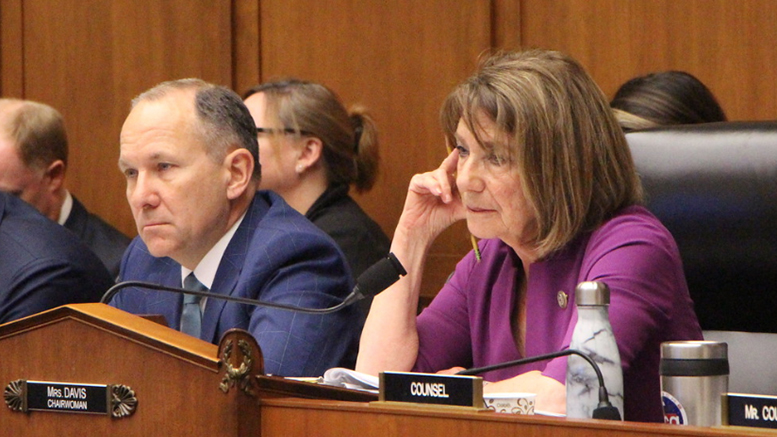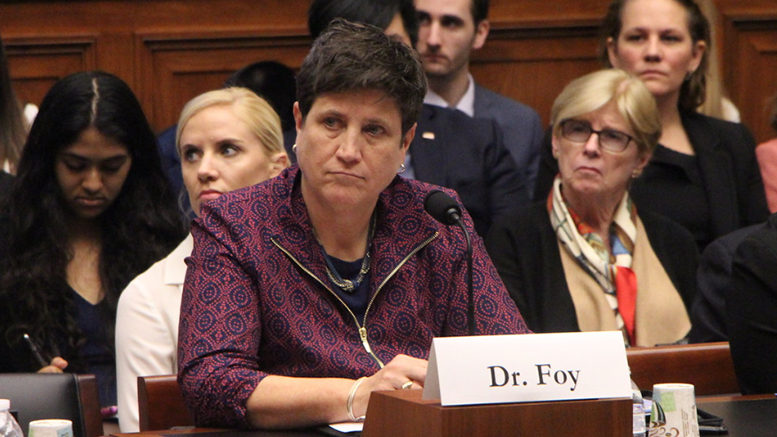Democrats on the House education committee are working on a bill to authorize $400 million in federal grants for apprenticeships that would double to $800 million by 2025. The 149-page “discussion draft” of the bill also would bring apprenticeship programs — including youth and pre-apprenticeship programs — under one umbrella.
There’s also a good chance that Republicans on the committee may back the legislation.
Democrats released their draft bill to reauthorize the National Apprenticeship Act prior to Wednesday’s House Higher Education and Workforce Investment Subcommittee hearing on reworking the law, which has remained almost unchanged since it was enacted in 1937.
Rep. Susan Davis (D-California), who chairs the House panel, said the proposal has three key parts. It would:
- authorize $400 million in federal grants for fiscal year (FY) 2021, increasing the level by $100 million each subsequent year until FY 2025
- create a new funding formula for state apprenticeship agencies
- streamline the application process for apprenticeships to become federally registered
The proposal could create more than 1 million new apprenticeships over the next five years, Davis said.
More robust support
The new federal grants would help to create and expand registered apprenticeships, youth apprenticeships and pre-apprenticeships, including ones in nontraditional occupations, Davis said. To do that, the grants would support intermediaries in expanding such programs and serve to better align secondary and postsecondary education programs with apprenticeships, she said.
The proposal’s pitch for a new formula fund would provide consistent, dedicated funding each year for states’ efforts, which several witnesses during the hearing supported. A lack of stable funding for apprenticeships is a challenge for Maryland’s efforts to support and grow its programs, said Tiffany Robinson, the state’s labor secretary.
Sustainable funding for states, whether through formula funding or long-term grants of six to 10 years, would allow states to scale up apprenticeships, she said.
“This is really a game-changer,” Robinson said of the proposed formula-based fund.
The American Association of Community Colleges is generally supportive of provisions in the draft. It plans to provide comments to the committee along with a broader statement about apprenticeships after the bill is introduced.
Less red tape
Missing from the hearing discussions were so-called industry-recognized apprenticeship programs (IRAPs), which have been a hot-button issue for some Democrats. Many business and industry advocates — especially those from small- and medium-sized businesses — have argued that there is too much red tape in the current registered apprenticeship program for them to participate. They contend IRAPs would provide them with the flexibility to move more quickly in creating apprenticeships to fill available positions. However, opponents have countered that such programs are not proven, and could open the door for unscrupulous training providers, among other concerns.
The proposal floated on Wednesday — which Davis said “reflects the consistent feedback we’ve heard from employers” — would make it easier for them to create apprenticeship opportunities, as well as make the programs more consistent to ensure that they meet high-quality standards and protect workers, the chairwoman said.
She added that the proposal also would codify definitions and standards for all apprenticeship programs, from registered ones to pre-apprenticeships, which has hampered efforts to grow the programs.
Bipartisan?
Leaders on the subcommittee hope to strike bipartisan support for the bill. Part of the reason Wednesday’s hearing was postponed a week was to bring the parties closer to an agreement, said Rep. Andy Levin (D-Michigan).
Ranking member Rep. Lloyd Smucker (D-Pennsylvania) indicated that there’s an opportunity to do that.
“There’s a lot we agree on and I hope that we can work through any remaining differences,” he said at the hearing.
Davis also expressed willingness to do the same.
“We’re ready to move forward on this and work through any of the issues that still remain,” she said.
Some Republicans did note that the cost of the program was a potential issue. Rep. Ben Cline (R-Virginia) said he would like to see more nonfederal investment, adding that a 25-percent match from states in the proposal is “woefully inadequate.”

Showcasing promising practices
Wednesday’s hearing focused mainly on the efforts of several states and business and industry in developing successful apprenticeship efforts. Maryland’s Robinson said the state in 2017 refocused on apprenticeships, which resulted in an increase in the number of apprenticeships from 7,340 to 10,771 — a 40 percent jump. It should surpass 11,000 by the end of the year.
The state also reached out more to businesses that haven’t traditionally offered apprenticeships, such as healthcare, cybersecurity, information technology and advanced manufacturing. That effort resulted in nearly 15 percent of all apprentices in Maryland now being registered in occupations outside the construction trades, Robinson said.
Federal grants totaling $6.9 million also have helped the state develop innovative practices to spur apprenticeships. Maryland also developed incentives to draw in more businesses, such as an apprenticeship tax credit of $1,000 per apprentice hired, as long as the apprentice works at least seven months in the calendar year. More than 700 tax credits have been awarded, Robinson said.
Reaching younger and older students
Many apprenticeship efforts are now reaching K-12 students. Some states have developed youth apprenticeships that allow high school students to earn a diploma and college credits in addition to a certificate of proficiency from the state. Wisconsin offers such a program, and students who continue to a registered apprenticeship can apply their previously earned hours toward the program. Since 2015, 1,371 public and private Wisconsin high school students participating in youth apprenticeships have received 5,174 credits at technical colleges in the state, according to Morna Foy, president of the Wisconsin Technical College System.
Offering apprenticeships to incumbent workers is just as important, Foy said. Like many states, Wisconsin is facing an aging workforce with fewer high school graduates to flow into the workforce pipeline, she said. That’s made it harder for employers to find and compete for skilled workers. As a result, more businesses are using apprenticeships to attract and retain workers, Foy said.
Stronger student supports
The hearing also addressed including more women, minorities and low-income individuals in apprenticeships. Several panelists noted the importance of providing apprentices with support services such as housing, childcare and transportation to help them succeed.
Apprenticeships that include community college partners often thrive because they can offer such services, Foy said. The colleges already offer support services to the general student population and can readily connect apprentices with them, she said.

